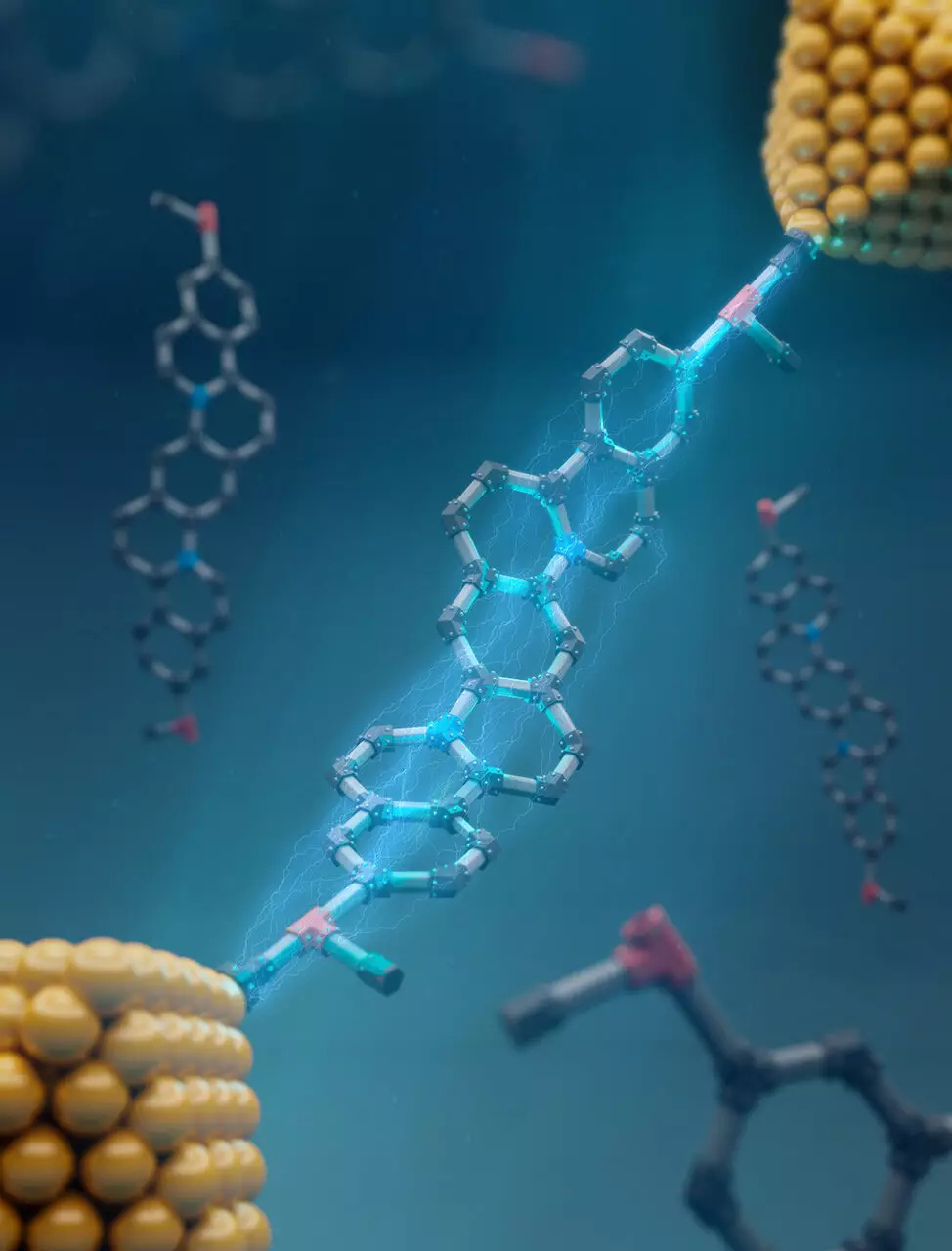As technology advances at an unprecedented pace, the quest for smaller, more efficient electronic devices has encountered critical limitations. Moore’s law, which predicts the doubling of transistor density on microchips every two years, faces significant challenges due to the physical constraints of silicon-based components. Researchers are now turning to molecular electronics as a promising alternative. This innovative field utilizes single molecules as the fundamental building blocks of electronic devices, potentially allowing for a new epoch of miniaturization and enhanced performance. However, molecular electronics comes with its own set of challenges—most notably the issue of inconsistent electrical conductance due to the flexible nature of many organic molecules.
One of the primary difficulties in the realm of molecular electronics is that many organic molecules can exhibit multiple conformations—variations in atomic arrangements due to bond rotation. This inherent flexibility can lead to significant variability in electrical conductance, with some molecules demonstrating differences as stark as 1,000 times in conductance based on their conformation. Charles Schroeder, a leading researcher in this domain, emphasizes that achieving consistent conductance is pivotal for the successful commercialization of molecular electronics. The ability to fabricate billions of identical components, each exhibiting the same electronic properties, is essential for the development of reliable and functional devices.
A Breakthrough with Rigid Structures
In response to the challenges posed by molecular variability, researchers at the University of Illinois Urbana-Champaign have pioneered a groundbreaking strategy by employing molecules with rigid backbones. These shape-persistent ladder-type molecules constrain molecular movement, leading to a stable set of conformations that promote consistent conductance. Such rigidity is critical as it minimizes the fluctuations in electrical performance that are often encountered with more flexible molecular designs. The team has demonstrated how this approach allows for a more reliable control of molecular conductance, thereby addressing one of the significant barriers to further advancements in molecular electronics.
The innovative research did not stop at the conceptual framework. The team led by Schroeder, along with postdoctoral researcher Xiaolin Liu and graduate student Hao Yang, developed a novel “one-pot” synthesis method for producing these ladder-type molecules. Traditional synthesis techniques typically involve expensive, multi-step processes that can be time-consuming and limit the diversity of the resultant compounds. In contrast, the one-pot multicomponent synthesis leverages simpler, commercially available starting materials, streamlining the creation of a diverse array of products. This method not only enhances the efficiency of material production but also paves the way for customized molecular designs tailored for specific electronic applications.
Application and Future Directions
The implications of this research stretch beyond merely improving the uniformity of conductance. By harnessing the principles of shape persistence, Liu and Yang further expanded their findings to include the design and synthesis of butterfly-like molecules, which feature a unique dual-wing structure. This adaptability reinforces the potential for innovative materials design that could ultimately culminate in more efficient and reliable electronic devices. The ability to engineer diverse molecular structures will allow for the creation of various functions within electronic systems, potentially leading to a new generation of compact and highly capable devices.
As the demands for smaller, faster, and more energy-efficient electronic devices intensify, researchers are uncovering transformative solutions through molecular electronics. The recent advancements in controlling molecular conductance via rigid backbones represent a significant step towards overcoming the obstacles that have previously hindered progress in this field. With continued exploration and refinement of synthesis methods and molecular designs, the vision for commercial molecular electronic devices may soon transition from theoretical concept to practical reality. The move towards shape-persistent molecules could redefine the landscape of electronic engineering, enabling an era where the limitations of size and variability can be deftly addressed, leading to innovations that were once thought impossible.

